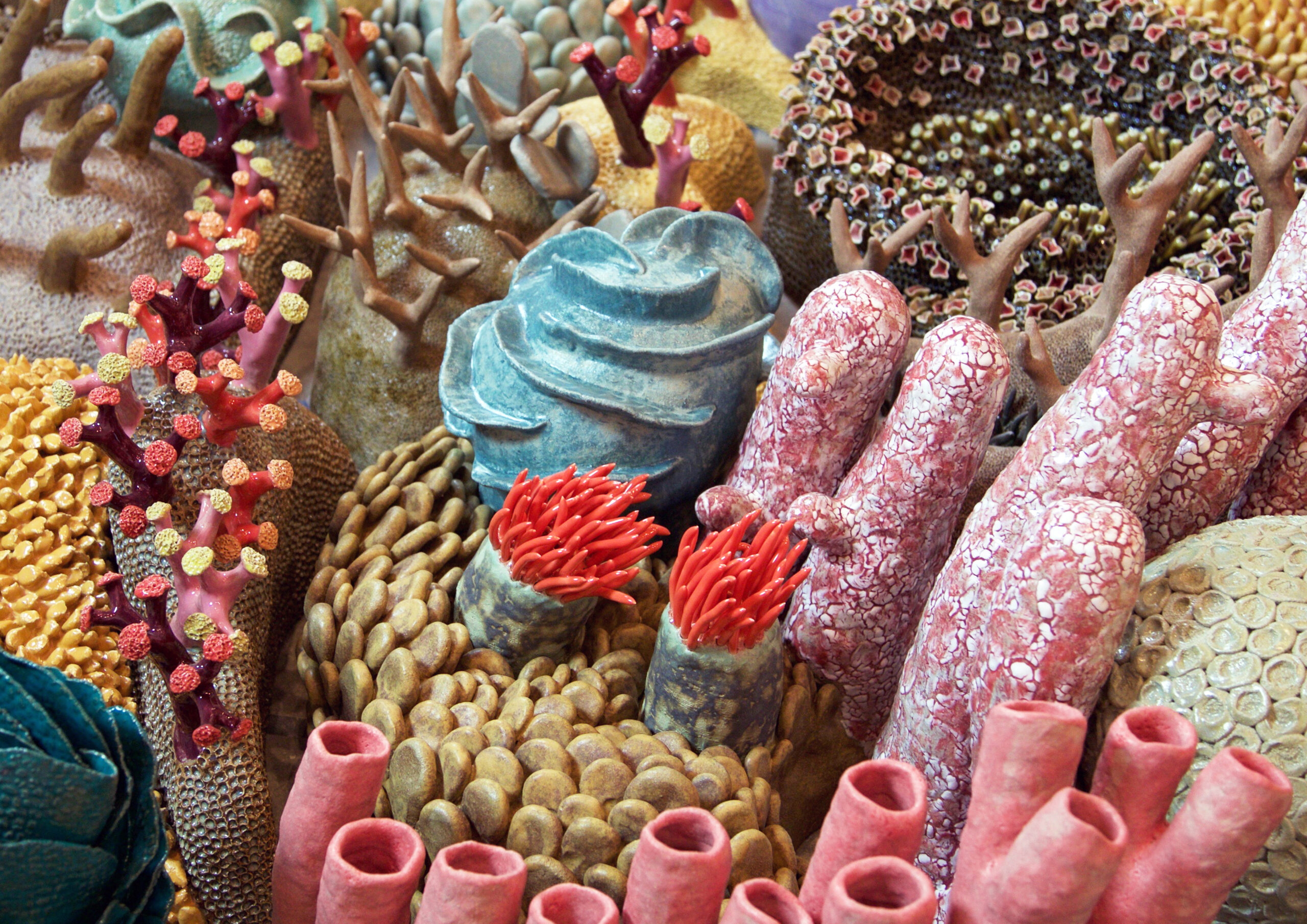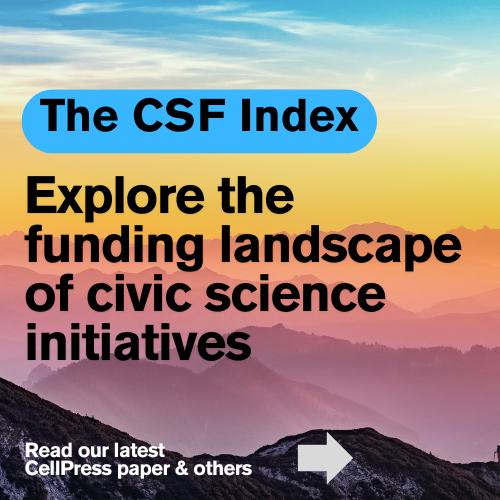Civic Science Observer
California artist Courtney Mattison explains how art is a natural advocate for marine conservation
Mattison: The future of coral reefs looks grim, and the story must be told no matter what.

Corals have been a lifelong muse for California artist Courtney Mattison. By the time she was in high school in San Francisco, she was sculpting corals and other marine invertebrates.
“I was just fascinated with that kind of alien world in my own backyard. And the most natural way for me to explore that was artistically,” Mattison told The Civic Science Observer.
Now, as a professional visual artist and sculptor, Mattison creates large-scale wall installations of corals that are informed by her educational and professional background in marine science. One of the goals of her work is to reach people and cause them to interact with pressing environmental issues.
“Art and visual media can go beyond showing us scientific evidence or revealing a problem, they can make us care and act to protect,” Mattison said.
Mattison spoke about the future of corals at the American Geophysical Union’s 2024 annual meeting in December. At the meeting, she and Derek Manzello, a coral reef ecologist affiliated with the National Oceanic and Atmospheric Association, spoke about how science and art might intersect as they each address urgent environmental challenges.
“We both do what we do because we fell in love with the ocean and we’re passionate about it and we want to protect it in some way,” Mattison said of her participation in the plenary session on corals. “The way that scientists do that can often be very different from how artists do that, because one like being an artist, is very outward-facing advocacy work, and what he does is basically the opposite—the point of being a scientist is to be neutral and follow the evidence. So, it’s interesting to talk about the parallel and opposite tracks, and they’re both powerful ways to make a difference in terms of conservation for coral reefs.”
When art and science intersect
Corals are a type of animal that lives in a symbiotic relationship with dinoflagellate algae. But when the water gets too warm, corals expel the algae living in their tissues, causing the coral to “bleach” or turn completely white, according to NOAA.
The world is currently in the middle of its fourth global bleaching event. What’s more, this bleaching affects marine life that might depend on the corals to survive. An estimated 500,000 to 1.3 million species live on coral reefs worldwide, NOAA’s Manzello told the AGU audience.
“The future of coral reefs looks grim, and the story must be told no matter what. So I combined my backgrounds in marine conservation biology and ceramic sculpture to visualize climate change with the goal of inspiring social change and policy change, and translating concepts from environmental science into sculptural installations and objects in an attempt to bring the beauty and fragility of marine life above the surface and into view,” Mattison said at AGU.
Mattison initially planned to become a scientist, and she completed coursework in marine biology. But while getting her master’s degree in environmental studies, she realized that art was “the most natural way for me to advocate for the conservation of marine life, and that is a career in itself.”
“The sea really is kind of full of secrets, and I feel like nature is more creative than I could ever be. It really does feel like an endless source of inspiration for my artwork,” Mattison told The Civic Science Observer.
When Mattison sculpts her corals, she uses calcium carbonate, which is the compound that corals precipitate to form their stony skeletons, as well as a common glaze ingredient. Although Mattison can identify coral taxonomy, she chooses not to focus on being completely realistic because she seeks to spark the viewer’s sense of wonder and curiosity.
“That shared fragility is really fundamental to the message of my work. Rather than being too fragile, it feels essential that the medium of my work be ceramic. Ocean waves, seashells, fern fiddleheads, even galaxies serve as inspiration for my work,” Mattison said.
Mattison does a lot of large-scale wall installations and arrays the corals in a swirling pattern to give the viewer a sense of feeling like they are underwater and exploring coral reefs in person. The individual coral sculptures are intricately detailed so that viewers and discover details from different angles.
At the AGU conference, Manzello discussed how science-infused art can reach people and populations in a way that solely facts and research cannot.
“Most people don’t think about coral reefs or have any concept of what they are,” Manzello said. “I want people to know what I am seeing and why I have this passion. The coral reefs are out of sight, out of mind for a lot of people. I’m given hope by people like Courtney who are taking art and exposing people to coral reefs that never get to see coral reefs. I have no doubt that Courtney’s work has caused a lot more awareness than me swirling away in my office, analyzing data and angrily writing rebuttals to reviews.”
Although coral reefs have been under great stress in recent years amid warmer ocean temperatures, the good news is that corals may actually survive bleaching, bucking the misconception that once a coral bleaches, it dies, according to Manzello. This is partly because different species of corals have varying thermal tolerances. Estimating the survival of reefs based on one thermal threshold is “problematic and very simplistic,” Manzello said.
However, even though corals may not necessarily die from bleaching, they may sustain damage. Corals that survive bleaching will have depressed growth for about two to four years, and they may have impaired reproduction for four to five years. They might also become so stressed that they may become immunocompromised and can suffer mortality from disease upwards of one to two years, Manzello said.
And yet some species of corals are proving to be resilient. For instance, the Indo-Pacific reefs have exhibited “pretty good recovery so far,” with most reefs there bouncing back from a bleaching event in about seven to 15 years. The Great Barrier Reef, which is in the Indo-Pacific, even had its high coral cover on record in 2023, Manzello said.
Manzello encouraged the scientific community to create more monitoring programs in order to receive better data, including data on fate tracking to understand just how corals are dying. This kind of data may prevent a localized extinction.
“A lot of people say, Well, why do we need more monitoring? Well, the more you understand what’s happening to these corals, the more you could potentially save in the future,” Manzello said.
Mattison told The Civic Science Observer that she hopes that people who attended the AGU plenary session came away with a sense of empowerment that they can use their skills and passions to conduct meaningful scientific work.
“It’s going to take all kinds of creative solutions happening all at once,” Mattison said.
Joanna Marsh is a freelance writer and journalist based in Washington, D.C. For The Civic Science Observer, she reports on new developments across the citizen science landscape, covering both new research and on-the-ground practice. Her work highlights how local communities are engaging with scientists to contribute to ongoing scientific research and lessons being learned by the involved stakeholders.

-
Civic Science Observer1 month ago
What are the objectives of the Neurotech Justice Accelerator at Mass General Brigham?
-
Civic Science Observer3 weeks ago
Meet the New Hampshire organization changing the way we see insects
-
Civic Science Observer3 weeks ago
Dear Colleagues: Help us understand the national impacts of federal science funding cuts on early career researchers in academic laboratories
-
Civic Science Observer2 months ago
Some of the key takeaways from the 2024 Communicating Discovery Science Symposium in South Africa






















